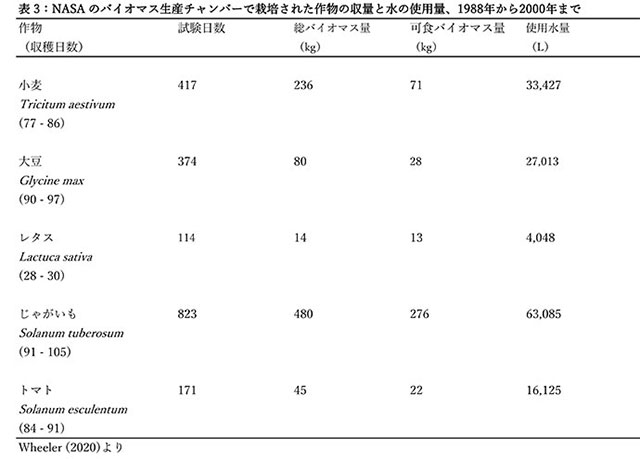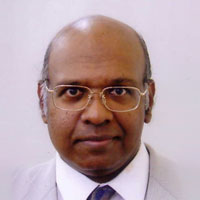|
宇宙旅行食-今後の方向性
メディフォン株式会社
医療通訳者 スリカンタ 彩智 宇宙航空研究開発機構(JAXA)は2023年2月28日、応募者4,127名の中から新たな宇宙飛行士2名(46歳の世界銀行職員の男性と28歳の女性医師)が選ばれたと発表した。 残念ながらこの選考を逃した他の 4,125 人も悲観する必要はない。 今後 30 年以内に、これら 4,125 人のうちのかなりの人々が、宇宙旅行者として、少なくとも短期間の飛行では宇宙に旅行するという夢を実現できることであろう。
人間は地球の重力下でも宇宙の無重力下でも、生きていくためには食べ物や飲み物を摂取する必要があるため、食品および栄養科学者だけでなく起業家にとっても、宇宙旅行の食事というこの新しいテーマを探求する大きなチャンスが存在している。表1にマーキュリー、ジェミニ、アポロ、スカイラブ、およびアポロ―ソユーズ計画に参加した宇宙飛行士を対象とした研究から、NASA の科学者が宇宙旅行者の食糧要件に関連して検討し、解決した問題の概要を示す。1950年代には、無重力下では人体に取り返しのつかない生理的変化が起こる可能性があるという予想が広まっていたが、これらの観測により、それは否定されることとなった。それでも、依然として宇宙環境における長期間の活動には問題が多いものと考えられている(Mills および Harding、1983)。  宇宙船には食品保存用の冷凍庫や冷蔵庫が搭載されていなかったので、1960 年代以来、宇宙飛行士は 7つの異なった種類の食品を摂取してきた。 NASA ジョンソン宇宙センター所属のMichele Perchonokとその関係者による総説 (Cooper ら、 2011)では、宇宙飛行士が摂取する食品の種類について以下のように述べられている。 (1)耐熱食品(レトルト):病原体、腐敗微生物、酵素活性を除去できる温度まで加熱された食品。パウチされたスープ、デザート、プリン、メインディッシュ。 (2)照射食品:食品を無菌加工するためにFDAより特別に許可された照射食品。9品目の肉類。 (3)乾燥食品:フリーズドライされた食品。スパイシーなインゲンなどの副菜、シリアル。 (4)自然そのままの食品 : 微生物の増殖を抑制するために水分活性が抑えられた食品。アーモンド、ピーナッツ、ドライフルーツなどの市販の常温保存可能な食品。 (5)賞味期限が延長された食品 : 保存期間が18ヶ月まで延長できるように配合・包装された食品。スコーン、ワッフル、トルティーヤ、ディナーロール。 (6)賞味期限の短い生鮮食品:栄養面というよりは、心理的な満足感を満たすために限定的に提供される果物や野菜など。 (7)飲料 : 飲料パウチに真空包装された飲料。フリーズドライ飲料ミックス (コーヒーまたは紅茶) またはフレーバードリンク (レモネード)。
開発後、これらの食品はすべて以下のような品質管理のプロセスを受けることとなる。 (1)大腸菌群、コアグラーゼ陽性ブドウ球菌、サルモネラ菌、さらには有害な酵母やカビが含まれていないかを調べる微生物学的検査 (2)タンパク質、脂質、炭水化物、繊維、ビタミン、ミネラルに対する人間の栄養要求を満たす上で、それぞれの食品がどのように貢献しているかといった点の検査 さらに、宇宙空間中で食品の感覚的品質が損なわれないように、これらの食品の包装材料の品質検査も優先すべき点といえる。
宇宙での滞在期間は、(1)短期滞在 (1 ~ 7 日間)、(2)中期滞在(数週間から 3か月未満)、(3)長期滞在(3か月から少なくとも 2年間)の 3段階に分けられる。宇宙旅行の食事への要求事項も、3つの段階に応じて異なる。短期滞在者は宇宙旅行者であり多数派となるだろうが、現在の飛行機による旅行者の場合と同様に、宇宙船で旅行者と一緒に食べ物を持っていくことで必要な食料は賄える。中期滞在や長期滞在する人は、様々な分野の科学者でもある宇宙飛行士である。
長期間の宇宙飛行における人間の栄養必要量を表 2 に示す。  これらの宇宙旅行者が、宇宙船または国際宇宙ステーション (ISS) の限られたエリアで食料を生産するための方法を考案する必要がある。長期にわたる宇宙ミッションで供給される食料については、感覚的に受け入れ可能なものであり、栄養効率と 3~5年の期間の安全性を備えていなければならない。これは、宇宙農業という分野における一つの挑戦的な取り組みとなることだろう。宇宙旅行中に畜産を行うことは想像しがたいことであるため、宇宙旅行用の食品において動物性タンパク質の代替品については重要な検討事項といえる。宇宙農業における植物の利点としては、光合成によりO2を生成すると同時に化学的にCO2を削減できるメリットが挙げられる。現在、NASAの研究所(Wheeler、2020) や他の場所(Liuら、2021)で、密閉された大気中で生育できる適切な植物を選び、宇宙で遭遇する可能性のある条件で刺激してみる取り組みが行われている。NASAでは、宇宙空間での5つの作物の栽培に関する予備実験をバイオマス生産チャンバーで行ってきた。これらの作物は、縦に重ねられた水耕栽培システムで育てられた。1988年から2000年までの実験データの一部を表3に示す。  収穫量は植物に照射する光合成に有効な光量に大きく左右されているものと推測された。16 時間/8 時間 (明/暗) の光周期で栽培されたレタスは、研究された他の 4つの作物と比較してバイオマス収量が低くなった。これら 5つの作物の中では、Liu らが指摘した多くのメリットを持つため、現在はジャガイモに焦点が当てられている(2021年)。 そのメリットとしては、(1)塊茎を含めた収穫率が高いこと、および炭水化物が豊富な塊茎が大量の食物エネルギーを提供すること、(2)栽培および食品加工が簡単であること、(3)宇宙飛行中に生じるストレスに対する耐性が高いことが挙げられる。
最後に、ある種の食品は健康維持のために栄養補助食品としての機能も果たし得ることを忘れてはならない。長期の宇宙ミッション中に活性酸素種によって引き起こされる細胞へのストレスやダメージの予防のために、表2に挙げられている人間の栄養必要量については、Gomez ら(2021)によって提案された抗酸化カクテルの数値も組み込む必要がある。また、睡眠不足と疲労は依然として宇宙飛行士の間で繰り返し起こる問題である。バーガーら(2014)の研究では、スペースシャトルミッション乗組員の 78%(78人中 61人)と ISS 乗組員の 75%(16人中 12人)が睡眠促進薬を使用しなければならなかったと報告している。そのため、睡眠を促進することが実験的に証明された栄養補助食品(トリプトファンやその他の特定のアミノ酸などの睡眠を促進する栄養素を組み込んだもの)も、長期宇宙旅行者にとって真剣に検討する価値があるものである。
(和田俊一 訳) 引用文献
略歴
スリカンタ 彩智
Ph.D (食品化学),イリノイ大学アーバナ・シャンペーン校 米国 1986年 Ph.D (海洋生化学), 東京大学 1989年 博士研究員 (栄養免疫学), ペンシルバニア医科大学, フィラデルフィア 米国 1989年 - 1990年 グループリーダー(生化学技術), 日研フード株式会社 袋井市 1995年2月- 2000年3月 准教授、客員教授, 岐阜大学, 京都大学, 岐阜薬科大学 2000年 – 2019年 Space Travel Foods: Future Directions
Sachi Sri Kantha, Ph.D.
Clinical Medical Interpreter, mediPhone Inc. Japan Aerospace Exploration Agency (JAXA) announced the selection of two new astronauts (a 46 year old man and a 28 year old woman physician), among the 4,127 applicants, in February 28 of this year. Other 4,125 individuals who were unlucky in missing this selection need not despair. In the next three decades, quite a percentage of among these 4,125 may be able to realize their dream of traveling to Space, at least for short duration flight as space tourists.
Whether humans live either in the Earth’s gravity or zero gravity of Space, for survival, they need to consume food and drinks. Thus, a vast opportunity exists for food and nutrition scientists as well as entrepreneurs to explore this new theme of Space travel foods. Table 1 provides a summary of problems studied and solved by NASA scientists related to the food requirements of space travelers, from their studies in human astronauts who participated in the Mercury, Gemini, Apollo, Skylab and Apollo-Soyuz programs. What was learnt from these observations was that dire predictions prevailing in 1950s about physiological variations that might occur to human body under zero gravity were disproved. Nevertheless, activity for long period in the Space environment is still considered problematic (Mills and Harding, 1983).
Since 1960s, seven different types of foods have been consumed by astronauts. According to a review by Michele Perchonok, affiliated to NASA Johnson Space Center and her associates (Cooper et al., 2011), different types of foods consumed by astronauts are (1) themostabilized (retort) food: pouched soups, desserts, puddings and entrees (2) irradiated food: meat items (3) rehydratable food: side dishes such as spicy green beans, cereals (4) foods in natural form – commercially available shelf stable foods such as almonds, peanuts, dried fruits; all having reduced water activity to inhibit microbial growth. (5) extended shelf life food products: waffles, tortillas and dinner rolls, with a shelf life up to 18 months. (6) fresh food with short shelf life, such as fruits and vegetables: provided in limited amount to offer psychological satisfaction, rather than meeting dietary requirement. (7) beverages: freeze-dried beverage mixes (coffee or tea) or flavored drinks (lemonade).
After development, all these types of foods have to undergo quality control process: (1) microbiological testing for coliform bacteria, coagulase-positive staphylococci bacteria, salmonella as well harmful yeasts and molds. (2) how each type contribute it’s share in satisfying the nutrition requirement of humans in terms of protein, lipid, carbohydrates, fiber, vitamins and minerals. In addition, testing the quality of packaging materials of these foods also deserve priority, so as sensory qualities of the foods are not lost, while in Space.
The duration of stay in Space can be split into three phases: (1) short period stay (1-7 days), (2) medium period stay (extending from few weeks and less than 3 months), (3) long period stay (3 months to at least 2 years). Space travel food requirements also vary, depending on the three phases. Those making short period stay will be space tourists. They will form the majority. Like the current air travelers, their food needs can be looked after by taking food along with the travelers in the space ship. Those enduring for medium period stay and long period stay, will be astronaut scientists of varied disciplines.
Human nutrient requirements for long duration Space flight is provided in Table 2. Procedures have to be devised that these space travelers produce their food in the limited area of the Space ship or International Space station (ISS). It is common sense that food provisions for a long duration Space mission must have organoleptic acceptability, nutritional efficacy and safety range of 3 to 5 year period. This will be another challenging endeavor in the realm of Space agriculture. It is beyond imagination to engage in animal husbandry during Space travel. As such, alternatives for animal protein in the Space travel foods deserve recognition. The benefits of plants in Space agriculture include the merits that while generating O2 by photosynthesis, simultaneously they can chemically reduce CO2 as well. Currently efforts are being made in the laboratories of NASA (Wheeler, 2020) and elsewhere (Liu et al., 2021), to identify suitable plants that can be grown in a tightly closed atmosphere, to stimulate conditions that may be encountered in the Space. NASA had conducted preliminary studies of growing 6 crops (wheat, soybean, lettuce, potato and tomato) under Space conditions, in its biomass production chamber facilities. These crops were grown in vertically stacked hydroponic systems. Extracted data from experiments done between 1988 and 2000, is shown in Table 3. It was inferred that, yields were highly dependent on photosynthetically active radiation provided to the plants. As such, lettuce was grown with a 16 hr/8 hr (light/dark) photoperiod, resulting in a lower biomass yield, compared to other four crops studied. Among these five crops, focus is now on potato, due to many merits indicated by Liu et al. (2021). These include, (1) high harvest index and tuber yield, as well as carbohydrate rich tubers offer high amount of food energy; (2) simple horticultural and food processing requirements; (3) high tolerance against stress produced during spaceflight.
Finally, it should not be forgotten that some type of foods also serve the function of nutraceuticals in health preservation. Human nutrient requirements listed in Table 2, also need to incorporate the value of antioxidant cocktails, proposed by Gomez et al. (2021), for prevention of cellular stress and damage caused by reactive oxygen species during long term space missions. Furthermore, sleep deprivation and fatigue remain recurrent complaints among astronauts. Barger et al. (2014) reported from their study that 78% (61 out of 78) of space shuttle mission crew members and 75% (12 out of 16) ISS crew members had to use sleep-promoting medications. As such, experimentally proved food supplements (incorporating sleep-promoting nutrients such as tryptophan and other specific amino acids) that promote sleep also deserve serious consideration of long term space travelers. ReferencesBarger LK, Flynn-Evans EE, Kubey A et al. Prevalence of sleep deficiency and hypnotic use among astronauts before, during and after spaceflight: an observational study. Lancet Neurol., 2014; 13(9): 904-912.
Cooper M, Douglas G, Perchonok M. Developing the NASA food system for long-duration missions. Journal of Food Science, 2011; 76(2): R40 – R48.
Gomez X, Sanon S, Zambrano K. et al. Key points for the development of antioxidant cocktails to prevent cellular stress and damage caused by reactive oxygen species (ROS) during manned space missions. Npj Microgravity, 2021; 35: 1-19.
Klicka MV, Smith MC. Food for U.S, Manned Space Flight, Technical Report NATICK/TR-82/019, Food Engineering Laboratory, US Army Natick, Mass., 1982, 97 pp.
Liu Y, Xie G, Yang Q, Ren M: Biotechnological development of plants for space agriculture. Nature Communications, 2021; 12: 5998
Mills EJ, Harding RM. Special forms of flight. IV. Manned spacecraft. British Medical Journal, 1983; 287: 478-482.
Wheeler RM. NASA’s contributions to vertical farming. NASA/TM-20205008832, Kennedy Space Center, FL, Oct 2020, 15pp.    サナテックメールマガジンへのご意見・ご感想を〈e-magazine@mac.or.jp〉までお寄せください。 |
| Copyright (C) Food Analysis Technology Center SUNATEC. All Rights Reserved. |


